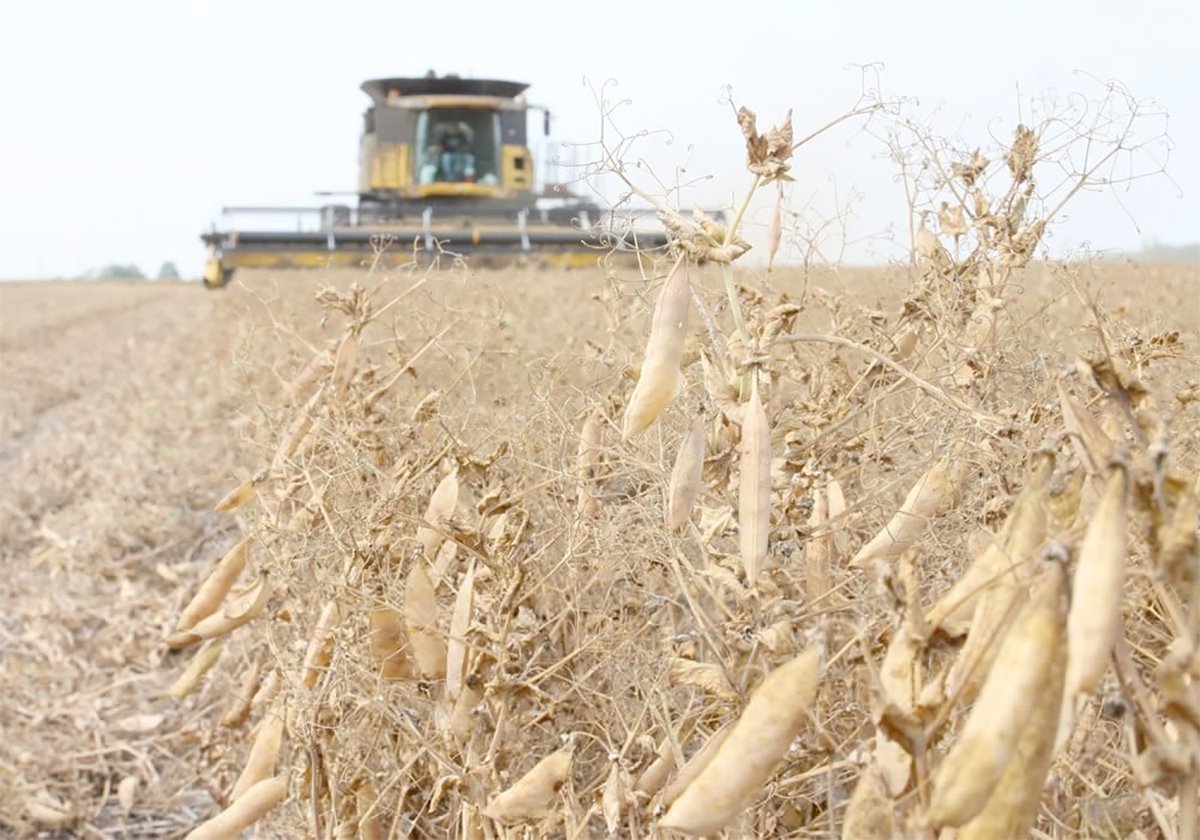Sustainability protocols | Food supply chains want assurance of management practices
The three Rs are paramount in elementary school, but the Canadian Fertilizer Institute has taken it one R further.
The 4R Nutrient Stewardship project is underway in four Canadian locations and three more in the United States. It refers to the right fertilizer applied at the right rate, right time and right place.
Clive Graham, the CFI’s vice-president of strategy and alliances, said reducing fertilizer losses through nitrous oxide emissions is a key focus in Alberta.
“We’ve quantified that in a greenhouse gas initiative protocol called the Nitrous Oxide Emission Reduction Protocol (NERP) that’s been approved by the Alberta government in 2010 as an approved way to develop an offset program for farmers to sell to the industry, for example,” he told a Feb. 19 meeting in Lethbridge.
Read Also

Chinese, Indian tariffs take toll on pea prices
The disruption of pea exports from Canada’s largest customers will likely result in slow pea exports for the remainder of the crop year.
Graham said carbon offset projects are being developed based on NERP and there are some pilot projects, but no carbon offsets have yet been traded.
“Generally, if a farmer improves their best management practices, our very, very conservative estimate is they can reduce their N2O (nitrous oxide) emissions by 15 to 25 percent,” he said.
“We think the actual coefficients are probably much higher. The reductions could be up to 50 percent N2O, but because this is a conservative protocol, we don’t want to overestimate.”
Fertilizer retailers improve their bottom lines by selling more, but Graham said the industry has moved beyond that.
“Canada is a mature market for fertilizer,” he said.
“Most large scale farmers in Canada use fertilizer. We’re not trying to grow the market. We’re trying to ensure that farmers are able to apply their fertilizer in a sustainable way so that the public can see that they’re doing the right thing for the environment.”
Dan Heaney, an agronomist and fertilizer expert with Random Cross Consulting, said the main focus behind the 4R initiative is to allow farmers to get more economic return on their fertilizer investments.
However, it also has value in assuring the public, government and supply chains that farmers are using nutrients responsibly.
“Every major supply chain company in the food business — ADM, Walmart, you name one — they all have or are moving towards what they call sustainability protocols for their supply chains, and this is working its way down to the farm,” Heaney said.
He thinks there will come a time when auditors visit farms and re-quire proof that farmers are using fertilizer in a sustainable way.
Other agricultural sectors have already been subject to demands from food companies to comply with certain protocols, such as open housing for hogs and free movement for chickens.
Heaney said those in the crop sector will eventually face similar scrutiny, and the 4R plan is workable for any crop.
“Part of this whole effort with 4R is to make 4R the recognized stewardship plan so you don’t have to have a different nutrient stewardship plan for any group or one supply chain versus another. And I think it’s coming along quite well.”
He listed seven elements to the 4R program:
- Setting sustainability goals.
- Getting stakeholder input.
- Devising a system of integrated best management practices.
- Using scientific principles and evidence.
- Having a site specific fertilizer program.
- Measuring progress.
- Adapting management on an ongoing basis.
Managing nitrogen is the main focus of the Alberta project, but a 4R initiative launched last month in Manitoba is aimed at reducing fertilizer losses into water bodies. Graham said the Ontario plan has the same focus, while in Prince Edward Island the focus is on nutrient losses to groundwater.
“What we’ve found so far is that even though we’re operating in very diverse areas from P.E.I. to Alberta, that the principles seem to work the same way, no matter what kind of cropping system you’re doing or where you are geographically or what kind of climate you have,” he said.
The plan isn’t about drastic change to existing farmer practices, he added, but rather to make incremental change to improve fertilizer efficiency.
Alberta Innovates has provided $200,000 for the NERP project, and farmers can apply to be part of a demonstration project if they can commit at least 160 acres.
More information is available at www.nutrientstewardship.com.















